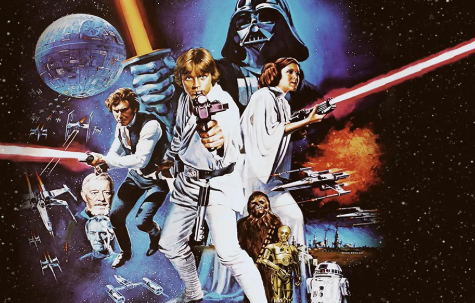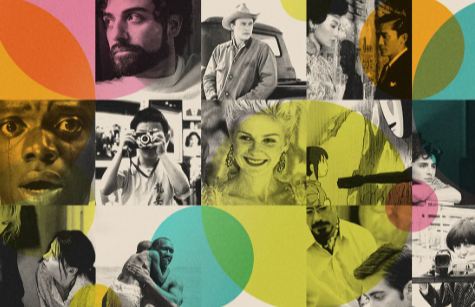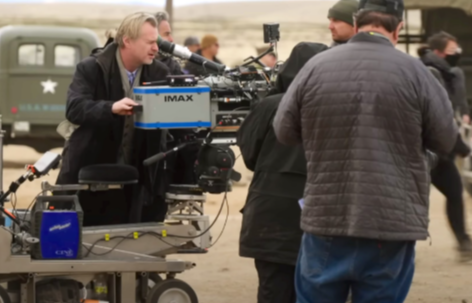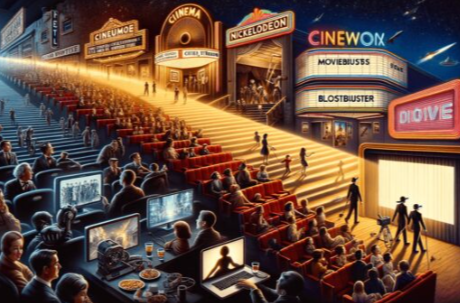The Impact of Technology on Modern Filmmaking and Visual Effects
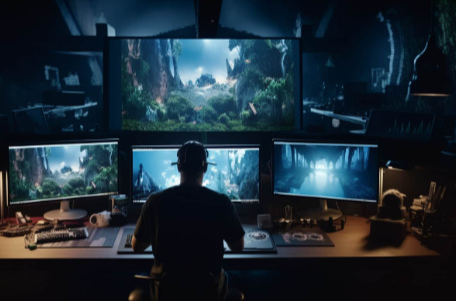
The integration of technology in filmmaking has fundamentally altered the landscape of visual storytelling. Innovations such as CGI and motion capture have enabled filmmakers to create visually stunning narratives that blend reality with digital artistry. Concurrently, advancements in sound design and editing enhance the immersive experience for audiences. As these tools become more accessible, new questions arise about the implications for creative expression and the future trajectory of the industry. What remains to be explored is how these technologies will shape narratives moving forward.
The Evolution of Filmmaking Technology
As filmmakers sought to enhance storytelling, the evolution of filmmaking technology has been marked by significant innovations that transformed the medium.
The advent of advanced film cameras allowed for greater visual fidelity, while sophisticated editing software revolutionized post-production workflows, enabling seamless narrative construction.
Enhanced sound recording techniques contributed to immersive audio landscapes, adding depth to viewer experiences.
Improved lighting equipment facilitated creative expression, allowing filmmakers to manipulate ambiance effectively.
Distribution methods evolved dramatically, with the rise of streaming platforms reshaping accessibility and audience engagement.
As production budgets fluctuated, filmmakers embraced budget-friendly documentary filmmaking, often leveraging festival circuits to gain exposure.
Collectively, these advancements have not only redefined the craft but also expanded the possibilities for storytelling in an increasingly digital landscape.
CGI and Its Role in Modern Cinema
The evolution of CGI techniques has fundamentally transformed modern cinema, enabling filmmakers to create visually stunning narratives that were previously unimaginable.
The seamless integration of CGI with live action has not only enhanced storytelling capabilities but has also redefined audience expectations regarding visual effects.
As technology advances, the potential for innovative applications of CGI continues to expand, shaping the future of cinematic expression.
Evolution of CGI Techniques
CGI techniques have undergone a remarkable evolution since their inception, fundamentally transforming the landscape of modern cinema. Initially reliant on rudimentary 3D modeling, advancements have led to sophisticated digital compositing and photorealistic rendering that enhance visual storytelling.
The integration of animation techniques has allowed for more dynamic character movements and immersive environments. Techniques like texture mapping and shader development have refined the realism of CGI elements, enabling creators to craft visually stunning narratives.
Furthermore, this evolution has fostered a culture of creative collaboration among artists and technicians, merging diverse skill sets to push the boundaries of cinematic expression. As technology continues to advance, the potential for innovation in CGI remains limitless, continually reshaping audience experiences in film.
Integration With Live Action
While traditional filmmaking often relied on practical effects and staged environments, the seamless integration of CGI with live-action elements has revolutionized storytelling in modern cinema.
This hybrid filmmaking approach utilizes cutting-edge on-set technology, enabling the real-time digital compositing of actors and virtual elements. By enhancing realism, filmmakers create immersive environments that engage audiences on a deeper level.
Actor integration becomes smoother, allowing performers to interact meaningfully with digitally rendered elements, thereby enriching visual storytelling.
Creative collaboration between visual effects artists and directors fosters innovative production techniques, ensuring that practical effects harmoniously coexist with CGI.
This synergy not only enhances the narrative but also pushes the boundaries of cinematic expression, ultimately transforming the viewer’s experience.
The Rise of Motion Capture
The evolution of motion capture technology has significantly transformed the landscape of filmmaking, enabling unprecedented realism in character animation and visual storytelling.
This technique has found diverse applications, ranging from blockbuster franchises to independent projects, enhancing actors’ performances through digital enhancement.
Looking ahead, advancements in performance capture promise to further blur the lines between live-action and animation, paving the way for innovative narrative possibilities.
Evolution of Motion Technology
How has the advent of motion capture technology transformed the landscape of filmmaking?
The evolution of motion technology has marked a significant shift in visual storytelling, driven by groundbreaking advancements that began with historical milestones such as the work of early animators and the pioneering systems of the late 20th century.
By utilizing sophisticated sensors and algorithms, motion capture enables the precise translation of human movement into digital environments, enhancing character realism and emotional depth.
This technological progression has democratized creativity, offering filmmakers unprecedented tools to express narratives.
As the industry embraces these innovations, motion capture stands at the forefront, redefining possibilities and challenging traditional filmmaking paradigms, ultimately fostering a landscape where imagination knows no bounds.
Applications in Filmmaking
A multitude of filmmakers have harnessed motion capture technology to enhance storytelling and character development, marking a transformative phase in cinematic production. This innovative approach allows for intricate performances that transcend traditional limitations, enabling characters to be portrayed with unparalleled emotional depth.
In indie filmmaking, where budget constraints often challenge creativity, motion capture democratizes access to high-quality visual effects, allowing independent creators to craft compelling digital storytelling experiences. The technology facilitates the seamless integration of live-action and animated elements, thereby expanding narrative possibilities.
As a result, filmmakers can explore complex themes and character arcs, engaging audiences in ways previously unattainable. Ultimately, motion capture stands as a pivotal tool in the evolving landscape of filmmaking, fostering artistic expression and narrative innovation.
Future of Performance Capture
As filmmakers increasingly adopt motion capture technology to enhance their narratives, the future of performance capture appears poised for substantial evolution.
Performance capture advancements promise to redefine digital actor representation, enabling unparalleled realism in character portrayal. Emerging techniques, such as full-body capture and facial recognition, allow for intricate emotional nuances to be conveyed, bridging the gap between human expression and digital animation.
This technological progression not only facilitates the creation of lifelike avatars, but also expands the creative possibilities for storytellers. Furthermore, the integration of artificial intelligence in performance capture systems may streamline the animation process, empowering artists to explore innovative storytelling methods.
As the medium evolves, the potential for immersive, emotionally resonant narratives becomes increasingly attainable, heralding a new era in filmmaking.
Virtual Reality: A New Frontier
While traditional filmmaking has relied on established visual techniques, the emergence of virtual reality (VR) represents a transformative shift in narrative and audience engagement.
VR facilitates immersive experiences that transcend conventional storytelling, enabling users to navigate dynamic virtual environments. This technology enhances storytelling potential by allowing interactive narratives, where viewers become active participants rather than passive observers.
As audiences engage with content in unprecedented ways, the boundaries between gaming integration and cinematic experiences blur, fostering creative exploration. Filmmakers can now design experiences that respond to audience choices, cultivating deeper emotional connections.
Ultimately, VR redefines the cinematic landscape, offering innovative pathways for storytelling that challenge traditional formats and elevate audience engagement to new heights.
The Influence of Artificial Intelligence
Artificial intelligence (AI) is revolutionizing the filmmaking process by integrating advanced algorithms into various stages of production, from script development to post-production editing.
AI storytelling enhances narrative creation through the analysis of audience preferences, utilizing data analysis and predictive algorithms to craft engaging scripts. Automated editing systems streamline post-production workflows, employing machine learning to identify optimal cuts and transitions.
Virtual assistants facilitate creative collaboration by managing schedules and resources, allowing filmmakers to focus on artistic vision. Additionally, deep learning models contribute to content personalization, tailoring experiences that resonate with diverse audiences.
As AI continues to evolve, its influence on audience engagement and the overall filmmaking process will likely redefine industry standards, fostering innovative approaches to visual storytelling.
Enhanced Sound Design and Editing
Sound design and editing have undergone a transformative evolution, driven by technological advancements that enhance auditory experiences in filmmaking.
The integration of audio technology has facilitated the creation of dynamic audio and immersive soundscapes that engage audiences on multiple sensory levels. Innovations in spatial audio allow sound to be perceived in three dimensions, enriching storytelling and emotional depth.
Advanced sound editing tools enable precise sound mixing, allowing filmmakers to manipulate sound effects and dialogue with unprecedented clarity and control. Creative soundscapes can now be crafted to reflect character perspectives, enhancing narrative immersion.
This evolution not only transforms how stories are told but also expands the boundaries of artistic expression in cinema, offering filmmakers innovative platforms to explore auditory creativity.
Accessibility of Filmmaking Tools
The democratization of filmmaking tools has revolutionized the landscape of the film industry, enabling a broader spectrum of creators to produce high-quality content. Affordable equipment has become widely available, allowing aspiring filmmakers to bypass traditional financial barriers.
User-friendly software has simplified the editing process, making it accessible to those without formal training. Online tutorials further enhance this democratized access, empowering individuals with the knowledge necessary to refine their craft.
Collaborative platforms foster community engagement, enabling filmmakers to share resources and expertise. The rise of mobile filmmaking encourages indie productions to thrive, leveraging technology for storytelling.
Finally, streaming distribution has transformed how audiences consume films, providing creators with unprecedented opportunities to reach global viewers and cultivate diverse narratives.
The Future of Filmmaking and Visual Effects
As advancements in technology continue to reshape the film industry, the future of filmmaking and visual effects appears poised for unprecedented innovation. Emerging tools are enabling immersive storytelling that enhances audience engagement through virtual and augmented realities.
With the rise of democratized filmmaking, creators from diverse backgrounds can collaborate on projects that reflect global perspectives. Distribution platforms are evolving, allowing content to reach broader audiences while addressing ethical considerations regarding representation and inclusivity.
Additionally, advancements in budget management techniques are optimizing production costs, minimizing the environmental impact of filmmaking. As cinematic experiences become increasingly sophisticated, the fusion of technology and creativity will redefine the narrative landscape, fostering a new era of collaborative artistry in visual storytelling.
Conclusion
In conclusion, the evolution of filmmaking technology has redefined storytelling, enhanced visual narratives, and expanded creative horizons. From the seamless integration of CGI to the groundbreaking applications of motion capture, each advancement has transformed the cinematic landscape. As virtual reality and artificial intelligence continue to innovate, they foster immersive experiences that captivate audiences like never before. With greater accessibility to filmmaking tools, a diverse array of voices emerges, ensuring that the future of cinema is as dynamic and inclusive as its past.
